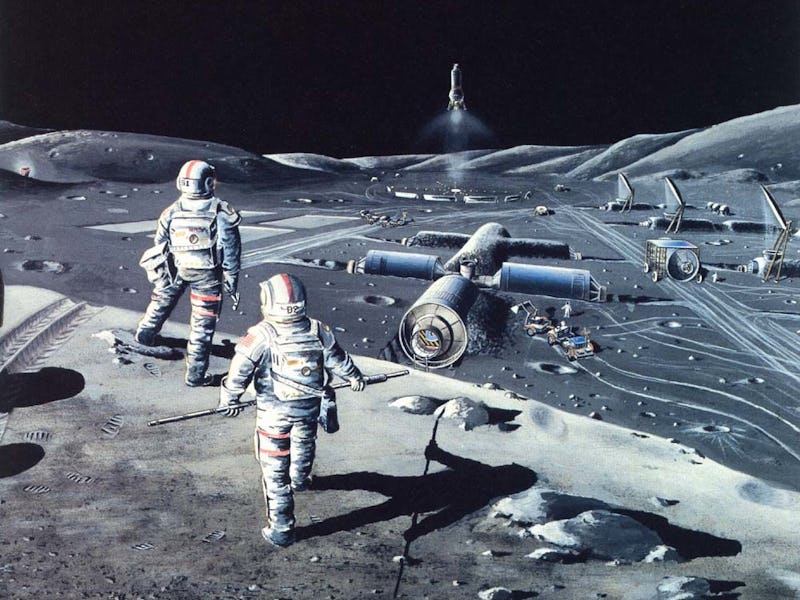Europe and China Are Working on a Moon Base
Everything we know about the Chinese-European moon base.

America may have been first to reach the moon, but Europe and China are gunning to be the first to build a moon base.
Both the Chinese and European space agencies confirmed this week that talks are underway with the goal of beginning collaborative efforts to construct a base on the moon. News of the talks was initially disseminated by Tian Yulong, secretary general of China’s space agency, via Chinese state media. It was corroborated and confirmed on Wednesday in a conversation between Bloomberg and Pal Hvistendahl, a spokesman for ESA, the European Space Agency.
Hvistendahl placed an emphasis on the importance of cooperation between these two, and other entities if extensive space travel and colonization are to be made possible.
“Space has changed since the space race of the ‘60s. We recognize that to explore space for peaceful purposes, we do international cooperation,” Hvistendahl told Bloomberg.
The groundwork for that cooperation will be laid by China’s Chang’e-5 expedition, the country’s first unmanned sample retrieval missions, set to return from the moon in November.
An international analysis of Chang’e-5’s sample will be conducted, by both China and the ESA, upon the mission’s return. A small step, but an important one. Europe also wants to send an astronaut to the Chinese space station (China was previously excluded from the ISS by the United States’s military concerns).
Further details about a design or timeline for the international moon base were not given, although it’s not hard to speculate what they might look like, given that both entities have stated their intentions for such a base in the past.
Public European plans for a moon base date back as far as 2015, when the ESA set a 2040 construction deadline for a moon base. The idea was described by Johann-Dietrich Woerner, the ESA’s director general, as a “moon village,” although he stressed that this didn’t mean “village” in the traditional sense. Rather, it would be a fully-functioning colony.
In 2016, Woerner put forward the idea of 3D-printing the moon base out of moon dust. It might sound like science fiction has addled Woerner’s brain with that suggestion, but it might just plausible — and it could provide a blueprint for development if initial China-ESA collaborations prove fruitful.
China and the ESA have expressed interest in a moon base as a jumping off point for mars and as a staging area for space mining, which could prove to be a highly lucrative business in the future.
Why Isn’t the USA Involved in the Moon Base Plans?
Curiously left out of the talks was the United States. While President Donald Trump has noted the potential military application of space travel efforts, he has sent mixed messages as to how supportive he will be of such efforts.
On asteroid mining, for example his NASA budget doesn’t paint a friendly picture. It’s possible that China and the ESA don’t see the United States as fertile ground for space travel anymore, which in turn has driven them to seek collaboration elsewhere. It could be that very perception that brought them together in the first place.
And on paper, it does seem like a good fit. The ESA gets access to China’s burgeoning space program and brings to the table its own ambition and extensive planning. Time will tell if the cooperative efforts hold and grow, and how quickly we really do make it to living on the moon.